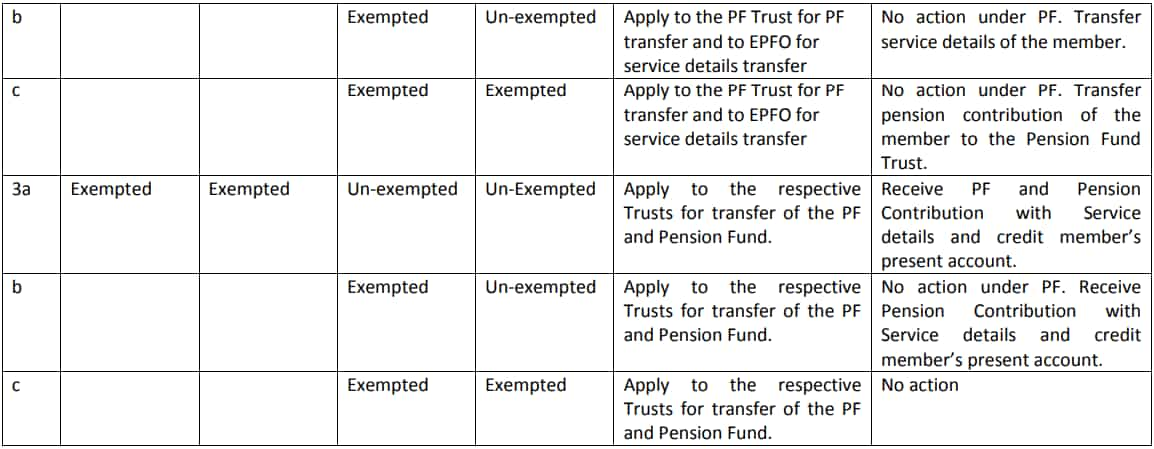How to file a PF transfer claim while working in an exempted/unexempted organisation
When an employee transitions from one job to another, transferring their Provident Fund (PF) account is crucial, as long as both organizations are covered under the Employees' Provident Fund (EPF) and Miscellaneous Provisions (MP) Act, 1952. Here's a step-by-step guide to transfer PF accounts
)
When an employee moves from one job to another, transferring their Provident Fund (PF) account is essential, provided that both organisations fall under the Employees' Provident Fund (EPF) and Miscellaneous Provisions (MP) Act, 1952. Here are the key steps involved in the process:
Step-by-Step guide to transfer PF accounts
1. Account Transfer Requirement: Transfer is necessary when an employee leaves one establishment and joins another where the EPF and MP Act applies. This involves moving funds from the previous PF account to the new one.
2. Details Transferred: The accumulated PF balance and service details, crucial for pension purposes, are transferred to the new account.
3. Pension Contributions: Pension contributions are only transferred if the establishment is exempt under the Pension Scheme.
4. EDLI Fund: The Employee Deposit Linked Insurance (EDLI) fund is not transferred. Benefits under EDLI are paid to beneficiaries based on the employee's date of death during service, regardless of previous employment.
Exempted vs. Non-Exempted Employers
Exempted Employers:
- Exempted employers are establishments granted an exemption from contributing to the EPF. These organisations typically have their own provident fund schemes approved by EPF authorities.
- Exemptions are usually given to establishments with robust financial stability and effective internal mechanisms for managing employee benefits.
Non-Exempted Employers:
- Non-exempted employers are required to contribute to the EPF on behalf of their employees.
- They do not have separate provident fund schemes and must follow EPF regulations regarding contributions and withdrawals.
- These employers ensure that employees receive financial security and retirement benefits through EPF contributions.
Given that an employee might move between exempted and non-exempted organisations, the transfer process varies. Here’s how it works:
Exempted to Non-Exempted: Transfer of funds and details is straightforward but pension contributions depend on the exemption status.
Non-Exempted to Exempted: Similar process but with specific considerations for pension and EDLI funds.
Understanding these distinctions and steps ensures a smooth PF transfer process, maintaining financial security and retirement benefits for employees transitioning between jobs.
Get Latest Business News, Stock Market Updates and Videos; Check your tax outgo through Income Tax Calculator and save money through our Personal Finance coverage. Check Business Breaking News Live on Zee Business Twitter and Facebook. Subscribe on YouTube.
02:59 PM IST













 EPFO News: EPFO members can transfer EPF online; check step-by-step guide
EPFO News: EPFO members can transfer EPF online; check step-by-step guide  EPFO News: Looking to transfer PF online? Know documents required, step-by-step process and other details
EPFO News: Looking to transfer PF online? Know documents required, step-by-step process and other details How you can transfer your EPF account; check steps and why you need to do it
How you can transfer your EPF account; check steps and why you need to do it